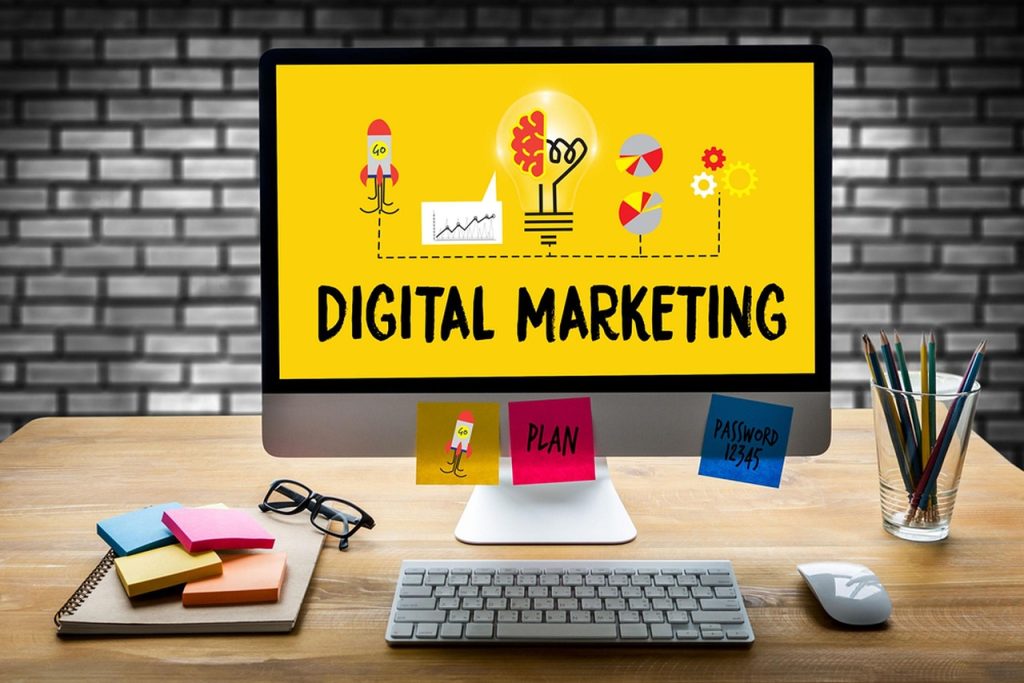
Brick and Mortar Stores vs Online Retail
Do people still love to shop in brick and mortar stores?
You’ve got your phone in hand and you look down and think, “I could really use new shoes.”
You unlock the screen, tap on the app, swipe here, swipe there, click and purchase. It’s easy and convenient, but there’s something more essential missing…
When you compare brick and mortar vs eCommerce, there are lots of pros on both sides. But one thing is for certain: technology hasn’t made the human touch obsolete (yet).
What do brick and mortar stores do that helps them compete with the ever-growing percentage of retail sales online? Find out below – plus, get the top eCommerce vs brick and mortar statistics of 2019!
What does a brick and mortar store mean?
When somebody refers to a brick and mortar store, they’re talking about a physical storefront where business transactions are conducted.
You may have seen reports over the past few years about a “retail apocalypse”, where thousands of small brick and mortar retailers have been forced to close shop because they face such intense competition from big corporations and online sales. While there’s some data to back up those claims, it’s still clear that small storefront retailers have yet to drop out of the race and have been adapting to the new digital environment.
For example, while many people may assume that the interactions at brick and mortar stores are between two people, the development of retail technology trends has resulted in more and more business being delegated to automated systems that reduce dependence on human employees.
The physical storefront is slowly but surely adopting technology to streamline the business, which is turning it into something of a hybrid between what retail used to look like and the full-on digitalization of the retail industry. That brings us to eCommerce.
[bctt tweet=”The physical storefront is slowly but surely adopting #technology to streamline the #business, which is turning it into something of a hybrid…” username=”Become_co”]
Side note: Brick and mortar stores oftentimes face big seasonal changes in their business, which can mean serious challenges for extended periods of time. If that sounds familiar, business loans can help keep you overcome those slow times of the year.
Of course, the type of store you run will affect the kind of industry loans you, as well as the specific circumstances that you find yourself in. Weigh your options carefully in order to choose the right funding solution for your business.
Also, be sure to read up on off-season survival tactics that other business owners use to get through cash flow droughts.
In this age of digital technology that we live in, it’s no longer enough to say that ‘you run a retail business’, since that now includes eCommerce (a.k.a. online retail or e-tail) businesses also.
As opposed to brick and mortar stores, eCommerce businesses run their operations entirely through digital means. The idea may seem foreign to veterans in the retail industry – if you’re still unfamiliar with the concept, now is the time to get caught up on recent eCommerce trends and online shopping statistics.
With the two ideas laid out, you may be wondering how they compare. We were just getting to that – keep reading for a breakdown of brick and mortar vs eCommerce.
Online shopping vs in-store shopping statistics
There’s a lot to consider when comparing shopping online vs in-store, but research is providing insights that help us track how both parts of the retail industry perform. We promised you the top eCommerce vs brick and mortar statistics of 2019, and here they are.
Top retail sales statistics:
- Total retail sales in July 2019 rose by 0.7% since the preceding month; compared to July 2018, retail sales have risen 3.4%
- By the dollar amount, total retail sales already exceed $5.4 trillion and are expected to cross the $6 trillion mark by 2022
- Overall retail trade makes up roughly 5.6% of GDP
- More than 5,500 brick and mortar stores closed in 2018; that number is projected to rise by 23% in 2019
- The percentage of retail sales online is predicted to reach nearly 12.5% by 2020, compared to only 9% in 2017
- Since the year 2001, online retail sales have grown by 300%
Top retail consumer statistics:
- 67% of Millennials (and 56% of Gen X-ers) report a preference for eCommerce shopping over in-store shopping
- More than 55% of shoppers reported visiting a store prior to purchasing online
- Spending online among men was reported to be nearly 30% higher than that of women
- 35% of online adults shop online exclusively through their smartphones
- 40% of consumers choose to shop online to save themselves time
Bonus stat: 36% of people who own a smart speaker have made more than one purchase through voice-order

Can brick and mortar stores survive?
There’s no doubt that small business brick and mortar stores face stiff competition from big corporations and online retailers – online shopping statistics speak for themselves. But don’t count them out just yet!
Here are some of the top ways that in-store shopping is staying in the fight:
1. Build strong customer relationships
If you’re comparing eCommerce sales vs retail sales in physical storefronts, one of the clearest advantages of storefronts is the value of human interaction.
In fact, more than 70% of consumers prefer interacting with a human when they reach out for customer service, compared to 9% who prefer digital assistance. There are differences between generations, with 79% of Baby Boomers reporting a preference for human customer support and 66% of Millennials.
There’s also the value of building personal relationships with customers that doesn’t manifest immediately. Bain and Company finds that, on average, returning customers spend almost 70% more in months 31-36 of their relationship with a company than they do in the first six months of the shopping relationship.
Clearly, maintaining good customer relations pays off in the long run, which makes it all the more important that small business owners work on improving customer experience.
Regarding big retailers, it’s no secret that popular corporate logos have a knack for ‘eclipsing’ the individual faces that actually work in the business. Apart from the lack of personality, corporations will typically lack the level of professional advice that customers can get at a small brick and mortar retailer. Offering a wide variety of products isn’t always a good thing; the more limited variety of products that are offered at smaller retailers can be looked at as an advantage.
We get to that in the next point.
2. Put your eggs in one basket
That’s not a typo – hear us out! We aren’t suggesting that you should open a store where you sell only one service or product. A fair bit of diversity is important, of course.
But have you ever considered that corporate retailers like WalMart offer such a broad variety of products that it may be seen as a disadvantage?
Selling everything from fishing bait to patio furniture makes it difficult for employees to provide deep insights into the details of any of those products. If a customer is looking to make a big purchase and has questions, wishy-washy answers – or no answers at all – will leave them unimpressed, to say the least.
The point is that brick and mortar stores can choose to specialize in one area and will be able to give much more valuable advice on which products are right for each customer’s needs. A narrower spread of inventory in comparison with that of WalMart or other big competitors isn’t necessarily a bad thing if you’re able to prove the value of your expertise to your customers.
Likewise, the reputation you build as an expert will go a long way when it comes to building your local network. Which brings us to our final point!
3. Network with your neighbors
You can slip a flyer under your next-door neighbor’s door, but that’s not exactly what we’re getting at here. We’re referring to making meaningful connections with other small businesses around your area.
Organizing promotions and special deals with other local businesses isn’t only mutually beneficial from a financial standpoint, but will also solidify your role as a valuable addition to your community. For example, if you own a brick and mortar store where you sell home furniture, you can build a partnership with local real estate agencies who can recommend your business to new homeowners (and you can advertise for them in your establishment in exchange).
It can sometimes feel like the competition that brick and mortar stores face is a good reason to be cautious while dealing with other companies. But it’s crucial not to limit your opportunities to grow and strengthen your business out of fear of the big bad corporation. In fact, forming partnerships with other local businesses can act as a strong defense against the threat that corporate retailers pose.

Bonus Tip
Don’t get too wrapped-up in the ‘online sales vs retail sales’ debate. Either way, obstacles will arise that will require additional funding to overcome. Maybe you need equipment financing to replace machinery. Perhaps you need help with disaster recovery. Or it could be that you have lots of unpaid invoices piling up.
Whatever it may be, it’s important to point out that banks reject more than 80% of small business loan applications, so why try your luck against such difficult odds? Avoid the stress and keep your credit score steady with Become.
With the power of financial technology, Become provides you with the tools to improve your funding chances, and a marketplace where you get to compare and choose the optimal funding option for you.
Plus, Become’s proprietary LendingScore™ technology gives small business owners unique insights into their financial profile that helps them understand how lenders see them. That’s a level of transparency that’s unprecedented in the business lending industry.
Will eCommerce stores continue to grow?
Online shopping vs in-store shopping statistics point to one answer: yes, eCommerce will continue to grow. Over the past 19 years alone, online retail sales have increased in volume by 300%! And at the same time, department store sales have dropped by nearly 50%.
When you combine that with the statistics cited above that show nearly 70% of Millennials preferring to make purchases online, it points towards a future where consumers will conduct the vast majority of their shopping and buying through eCommerce. So what does that mean for brick and mortar stores?
Even though online shopping is expected to grow, that doesn’t mean that physical storefronts will disappear altogether. Lots of brick and mortar stores are making good use of retail trends to stay competitive. That includes multi-channel selling, where the business is conducted not only in person but is expanded so that customers can buy directly through their website, through social media platforms, and also through bigger eCommerce marketplaces such as Shopify, Amazon, and eBay.
There’s no rule against combining the best of both worlds!
Pro tip: While different e-commerce platforms each have their perks, one of the biggest pluses of selling on Shopify is having access to BeProfit – Profit Tracker.
BeProfit is a cutting-edge Shopify profit calculator that makes it effortless to track and monitor your store’s expenses and profit margins. The app gives you a full breakdown of all of your expenses so you can spot where to make improvements to your store’s budget.
Try the BeProfit Shopify calculator, here.
Bottom line
If brick and mortar stores want to remain a force to be reckoned with, they’ll have to stay up-to-date with trends in the retail industry more generally, which includes eCommerce trends as well.
Even by offering the most basic of eCommerce functions such as ‘buy-online and pick-up in store’, brick and mortar stores can give customers what they like from the world of online shopping while maintaining the advantages that the physical storefront.
The boundaries between shopping online vs in-store continue to blur as brick and mortar stores bring more technology into the mix. If that pattern continues, you won’t need to worry about saying farewell to brick and mortar stores in the near future!





